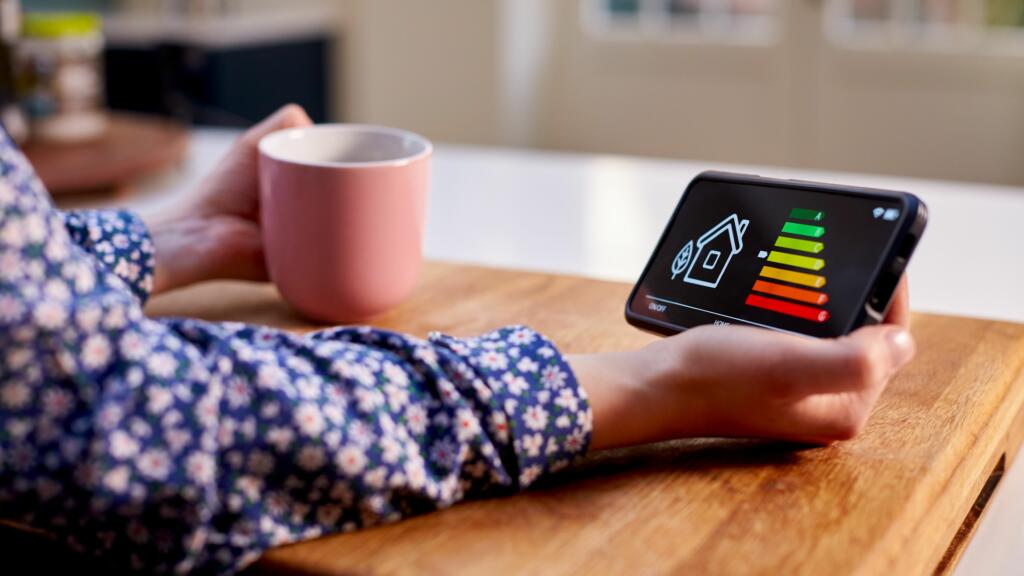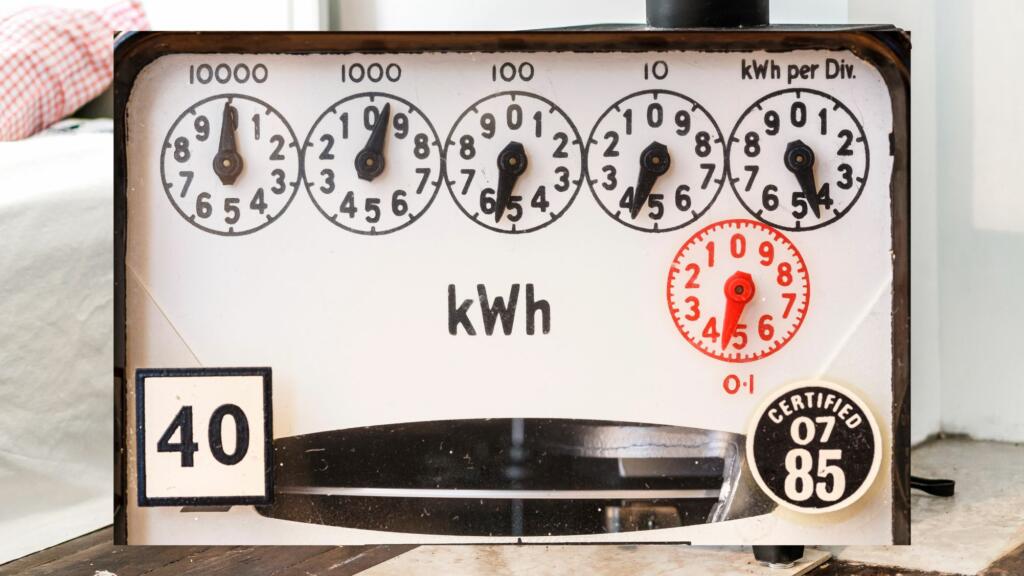
How to pigeon proof your solar panels
Camilla Sharman
Solar panels are a long-term investment. We spoke to the experts to find out how much an installation might cost you.
With the cost of energy literally going through the roof, we’re all looking for ways to conserve energy and save money on our utility bills. It’s a fact that although we’re being more vigilant with how much energy we consume, we’re still spending more.
But there is a bright side – we all have access to the sun’s energy. Investing in solar photovoltaics (PV) panels to capture this free power source is not only a green solution but could help you save money on your electricity bills. Saga Exceptional spoke to the experts to discover just how much solar panels cost and if they can save you money.
With the cost of energy literally going through the roof, we’re all looking for ways to conserve energy and save money on our utility bills. It’s a fact that although we’re being more vigilant with how much energy we consume, we’re still spending more.
But there is a bright side – we all have access to the sun’s energy. Investing in solar photovoltaics (PV) panels to capture this free power source is not only a green solution but could help you save money on your electricity bills. Saga Exceptional spoke to the experts to discover just how much solar panels cost and if they can save you money.
 Credit: Shutterstock/Ewelina W
Credit: Shutterstock/Ewelina W“Well-chosen solar panel systems can provide a reliable source of renewable electricity for decades,” states Which on its website, “helping to slash your electricity bills and cut your carbon footprint.”
Neil Woolley, customer acquisition director at the Octopus Energy Group agrees: “Solar panels are a great investment for your home. You can generate your own power, giving you energy independence, and you could end up spending 90% less on your electricity.”
Zero-rated VAT
It’s also a good time to invest as solar panels are exempt from VAT until March 31, 2027.
Solar panels allow for greater energy independence as you are generating more of your own electricity rather than relying on the grid.
But saving money is not the only reason that consumers are being drawn to investing in panels, as Woolley explains: “Often customers want to be less dependent on fossil fuels, and they see having solar panels as a step in their journey to making their lifestyle more sustainable and fit for the future.”
Alex Thwaites, director of EV and renewables at OVO, says, “We recently surveyed UK adults who have already installed solar panels, and found that lower bills were the main incentive for 45%, followed by reducing their household carbon footprint, at 24%.”
OVO’s survey was completed by 2,002 members of the UK’s general public, including 121 respondents who already had solar panels.
The amount you pay for solar panels depends on many variables, from the number of panels installed, to the cost of installation. According to Energy Saving Trust, an average setup based on a 3.5kW system will cost around £5,500. Meanwhile, Greenmatch, a portal for renewable energy quotes, bases its figures on a 4kW system at a cost of around £6,400. According to Heatable, the average domestic system tends to be between 3kW to 5kW.
How many solar panels will you need?
“The number of panels we recommend,” says Woolley, “really depends on the amount of roof space you have and how much energy you use.” However, based on a 3.5kW system, he estimates the average number of panels to be between nine and ten.
Ben Whittle, low carbon senior consultant at Energy Saving Trust says: “Many people choose to install as many panels as they can in order to get the best value for money.”
Once again, just like the cost of the panels, the amount you pay for solar panel installation will depend on the size of your system. As a starting point, Greenmatch suggests budgeting for approximately £300–£500 per installer, per day. With two people usually needed to install a system over one day, you can expect to pay in the region of between £600-£1,000.
 Credit: Shutterstock/zstock
Credit: Shutterstock/zstockAt certain times you’ll generate more electricity than you’ll be able to use. When this happens, you can either save the electricity for later use via a battery, or export the excess electricity to the National Grid for someone else to use. If you already have a solar system that was installed before March 2019, you get paid for this electricity through the Feed-in Tariff (FIT). However, the FIT is no longer open to new applicants.
It’s now been replaced by a Government-guaranteed scheme called the Smart Export Guarantee (SEG). “The SEG pays households with solar panels in England, Wales and Scotland for selling their surplus electricity back to the grid,” explains Whittle. “This will let you earn money during the times when your solar panels are generating more electricity than you can use during the day. While this will not be worth as much as storing the solar electricity in batteries, the SEG tariff will help you save further money on your energy bills.”
“Some energy suppliers offer their own non-SEG export tariffs, which are often more generous than the Government’s SEG scheme. However, these tariffs aren’t protected in the same way by the Government,” says Whittle, who advises a thorough examination of terms and conditions of each agreement before making your decision.
SEG eligibility
You must have a meter capable of providing half-hourly export readings, typically a smart meter, to meet the SEG eligibility requirements.
Your reliance on receiving electricity from the grid will depend on the amount of electricity you use and whether the energy you generate from your solar panels is sufficient for your needs.
Woolley explains: “For an average household, we would expect their import/export of electricity to roughly breakeven over the course of the year. Of course, if they have an electric vehicle or electrified heating, this may not be the case and there may be more power required from the grid.”
Solar panels are a long-term investment, so it would appear to make economic sense to also invest in a solar battery so that you can store your electricity and use it when it’s needed.
Woolley advises whether you opt for a battery depends on how much electricity you generate and when you use it. If you tend to use more energy-intensive appliances in the evening, rather than during the daytime, he suggests buying a battery. This allows you to store the energy that’s been generated during the daytime to use when the sun has gone in, or down.
But having a battery isn’t the best option for everyone. Whittle adds: “Before installing a battery, you should look carefully at the different energy tariffs available to you. How you use energy throughout the day and the tariff you sign up to will impact the savings you might be able to make.
“Many battery providers offer completely automated batteries that allow you to get the best value from tariffs, with electricity prices that change at different times of day, called Time of Use tariffs. A completely automated battery system with a Time of Use tariff could increase the savings you make on your energy bills,” he says, “but it’s a good idea to do some further research before committing to an installation.”
Whether you choose to invest in a battery or not, the energy you generate is yours. You can choose to use it when you want to or sell it back to the grid.
Although investing in a battery makes sense, as they allow you to benefit from the electricity you’ve produced in daylight hours, unfortunately they are not cheap. “The initial cost for a battery is higher than solar panels alone,” says Woolley, “but it’s a good idea if you want to be self-sufficient and avoid spending money on electricity from the grid in the long run.”
The added benefit? “You can also guarantee that the majority of the electricity you’re using is 100% clean, green and home-generated.”
According to the Energy Guide, an impartial organisation that helps UK households make better decisions about their home energy, the cost of the battery will depend on the battery type, quality and lifespan. Although, the cost of batteries will likely come down in the future.
Types of batteries and their cost
According to the Energy Guide, there are two types of batteries – lithium-ion batteries and lead-acid batteries.
Lithium-ion batteries are considered superior and can discharge 70%-90% of the total solar power harnessed by your panels, while lead-acid batteries can only discharge 50% – therefore, essentially, half of the energy you capture is lost.
This means lithium-ion batteries are more expensive, at around £3,500 to £6,000, while a lead-acid battery will cost in the region of between £2,000 to £4,000.
Although lithium-ion batteries are pricier than lead-acid batteries, they are more cost-effective in the long term, according to Swell Energy, as they “support a higher number of complete charges/discharge cycles before their capacity falls below 80%”.
It also reports on its website: “Recent research shows that a lead-acid battery would have to be 2.5 times larger in capacity than a lithium-ion battery to get comparable cycle life.”
You can expect a lifespan of around 25 years from your panels before they need replacing, whereas a battery will only last between five to 15 years. It’s almost inevitable that you will need to replace the battery before the solar panels, so the cost of two batteries should be factored into your overall investment.
You can also divert the energy you generate via a photovoltaic (PV) diverter switch, which lets you power the immersion heater in your hot water tank. The Energy Saving Trust estimates that installing a diverter will add about £800 to your installation cost.
Solar panels have proven to be a nesting spot for birds, with the build-up of materials and bird waste decreasing the system’s effectiveness. Protecting your panels from pigeons from the outset is likely to cost less than adding protection further down the line – as access can sometimes be tricky, especially if scaffolding is needed.
Project Solar UK, a solar installer, estimate that costs for protecting will start from around £300, with more robust solutions coming in upwards of £700.
Solar panels are a significant investment, although there is some help available in the way of grants.
This Government scheme is open to people on certain benefits and those with inefficient heating. It started in 2013 and is now in its fourth phase, with £4 billion of funding allocated to it between August 2022 to March 2026.
This scheme is short for Local Authority Flexible Eligibility and results from improvements to the third phase of the ECO3 (a grant to fund energy efficiency upgrades to homes). Under the previous scheme, families at risk of not affording fuel couldn’t qualify, so the LA Flex scheme has been introduced to widen the range of applicants. Under the scheme, you can qualify for free funding for the cost of energy-saving measures, such as solar panels. The scheme targets those in fuel poverty (households that spend at least 10% of their net income heating their home), and those who are the most vulnerable during cold weather.
Through the Green Deal you can access a loan to help make energy-saving improvements to your home, paid back through a charge added to your electricity bill. However, the loan is attached to the property, so if you sell your house, it will pass to the new owner. You can discover more by talking to a Green Deal assessor.
The SEG scheme was launched in January 2020, allowing households in Great Britain to earn cash for ‘exporting’ solar energy to the grid. This ensures that the energy you generate but don’t use isn’t wasted. Energy Saving Trust states on its website: “Under the scheme, all licensed energy companies with 150,000 or more customers must provide at least one SEG tariff.” Under the scheme you get paid for every unit of electricity that gets exported to the grid.
The SEG scheme replaces the FIT, which was closed to new applicants in March 2019.
VAT and solar panels
To encourage the uptake of solar panels, the Government announced in its Spring Statement in 2022 that VAT on energy-saving products would be set at 0%. However, according to the Federation of Master Builders (FMB) solar batteries are not included.
The FMB has more information about each scheme on its website.
The time it takes to recoup your investment depends on several factors, including the number of panels, the amount of electricity consumed from the panels and the cost of your electricity bill., “As a general rule,” says Woolley, “the more electricity you generate and use yourself, the less you’ll have to buy from the grid and the shorter the payback period.
“On average we expect a high-usage household – for instance, if they have an electric car – to have a payback period of approximately 10 years. For a regular usage home, this is likely to be around 15 years,” he adds.
These figures correspond with Solar Energy UK, which represents the solar energy industry. In its Value of Solar Heat report, and the accompanying report for Scotland, it says that in the best-case scenario, it will take around nine years to pay for the system: “What is clear under every scenario tested is that a home with a modern form of heating – such as a heat pump, or infrared heating – delivers the best financial performances.”
The report also demonstrates that using solar to decarbonise a home could cut bills by up to £4,585 per year, with more typical savings being around £1,300 annually.
 Credit: Ewelina W
Credit: Ewelina WAs it can take nine years or more to recoup your investment, you’ll want to know if you can recover the money if you move. Solar Energy UK, states in its report: “Homes fitted with solar PV achieve a higher sale price than comparable homes without them. A typical solar home could increase its value by more than £2,000 or more.”
It’s clear that if you sell your home before nine years, you are unlikely to recoup the cost of the equipment and installation, and even after 15 years, you might not make much saving. However, as they do reduce the running costs of a home, they can be seen as a benefit to potential buyers.
Thwaites refers to statistics published by Admiral saying that “solar panels can boost the value of your home by as much as 25%”. He also refers to figures published by Market Financial Solutions: “Some estate agents have reported buyers would be willing to pay a 20% premium on homes with high energy-efficient standards.”
Overall, there is limited evidence on this topic, and there’s no guarantee that solar panels will bring you a higher sale price.
Solar panels are certainly a smart choice that will help you save money on your energy bills and reduce your carbon footprint. And if you’re in it for the long term, you’ll recoup your money and reap the benefit of free energy, with the added bonus of making money by feeding the National Grid.
Whether you include a battery, a PV diverter and pigeon-proofing with your solar panels or not, the initial outlay is undeniably expensive. But if you’re able to make the payment upfront and avoid interest charges, you’ll recoup your investment much faster. The bonus of various grants and the Government’s current 0% VAT scheme on solar panels, (which runs until 2027), can all help to ease the cost.
Solar panel cost breakdown
Solar panels: £5,500
Installation (based on two days): £1,200
Pigeon proofing: £500
Battery (lithium): £3,500
Total: £10,700
These prices are a guide only.

Written by Camilla Sharman she/her
Published: Updated:
With her 30 years of experience, Camilla Sharman has covered a wide range of sectors within the business and consumer industries both as a feature, content, and freelance writer. As a business journalist, Camilla has researched articles for many different sectors from the jewellery industry to finance and tech, charities, and the arts. Whatever she’s covered, she enjoys delving deep and learning the ins and out of different topics, then conveying her research within engaging content that informs the reader.

Camilla Sharman

Camilla Sharman

Camilla Sharman

Camilla Sharman